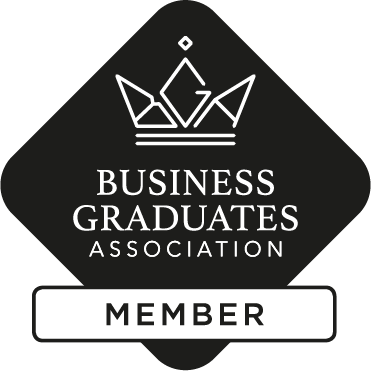University certificate
Scientific endorser

The world's largest faculty of information technology”
Introduction to the Program
An exhaustive and 100% online program, exclusive to TECH, with an international perspective supported by our membership with the Business Graduates Association”

The rise of Data Science in business processes is redefining the way organizations conceive corporate strategy. For example, its ability to transform information into actionable knowledge allows companies to anticipate trends, optimize their operations, and make informed decisions. In this context, professionals need to develop advanced competencies for the optimal handling of Data Science tools. This will enable them to ensure that data treatments are efficient.
To facilitate this task, TECH launches an exclusive Professional master’s degree MBA in Corporate Technical Data Science Management. Designed by leading experts in the sector, the academic journey will delve into aspects ranging from the technical approach to information management systems to the detailed analysis of the data lifecycle. Additionally, the syllabus will provide cutting-edge tools for data collection, cleaning, and even modeling. In this regard, the learning materials will also cover the regulatory foundations related to data protection. Thanks to this, students will develop advanced competencies to design scalable infrastructures, manage massive data flows in real-time, and deploy services in high-availability architectures.
Regarding methodology, TECH employs its disruptive Relearning system, based on the natural and progressive reiteration of key concepts in the syllabus. To access the Virtual Campus, IT professionals will only need a device with internet access. Additionally, renowned International Guest Directors will deliver rigorous Masterclasses.
Furthermore, thanks to TECH's membership in Business Graduates Association (BGA), students will have access to exclusive and up-to-date resources that will strengthen their continuous learning and professional development, as well as discounts on professional events that will facilitate networking with industry experts. Additionally, they will be able to expand their professional network by connecting with specialists from different regions, fostering the exchange of knowledge and new job opportunities.
Renowned International Guest Directors will offer intensive Masterclasses on the latest trends in Corporate Technical Data Science Management”
This Professional master’s degree MBA in Corporate Technical Data Science Management contains the most complete and up-to-date program on the market. The most important features include:
- The development of practical cases presented by experts in Technical Data Science Management in the business environment
- The graphic, schematic, and practical contents with which they are created, provide scientific and practical information on the disciplines that are essential for professional practice
- Practical exercises where the self-assessment process can be carried out to improve learning
- Its special emphasis on innovative methodologies
- Theoretical lessons, questions to the expert, debate forums on controversial topics, and individual reflection assignments
- Content that is accessible from any fixed or portable device with an Internet connection
With TTECH's Relearning system you will not have to invest a large amount of study hours and you will focus on the most relevant concepts. Enroll now!”
The faculty includes professionals from the field of Corporate Technical Data Science Management, who bring their work experience to this program, along with recognized specialists from leading societies and prestigious universities.
The multimedia content, developed with the latest educational technology, will provide the professional with situated and contextual learning, i.e., a simulated environment that will provide an immersive learning experience designed to prepare for real-life situations.
This program is designed around Problem-Based Learning, whereby the student must try to solve the different professional practice situations that arise throughout the program. For this purpose, the professional will be assisted by an innovative interactive video system created by renowned and experienced experts.
You will have comprehensive knowledge of data management systems and their strategic application in the corporate environment”

You will master the most sophisticated techniques for collecting, cleaning, and storing large volumes of data”
Why study at TECH?
TECH is the world’s largest online university. With an impressive catalog of more than 14,000 university programs available in 11 languages, it is positioned as a leader in employability, with a 99% job placement rate. In addition, it relies on an enormous faculty of more than 6,000 professors of the highest international renown.

Study at the world's largest online university and guarantee your professional success. The future starts at TECH”
The world’s best online university according to FORBES
The prestigious Forbes magazine, specialized in business and finance, has highlighted TECH as “the world's best online university” This is what they have recently stated in an article in their digital edition in which they echo the success story of this institution, “thanks to the academic offer it provides, the selection of its teaching staff, and an innovative learning method aimed at educating the professionals of the future”
A revolutionary study method, a cutting-edge faculty and a practical focus: the key to TECH's success.
The most complete study plans on the university scene
TECH offers the most complete study plans on the university scene, with syllabuses that cover fundamental concepts and, at the same time, the main scientific advances in their specific scientific areas. In addition, these programs are continuously being updated to guarantee students the academic vanguard and the most in-demand professional skills. In this way, the university's qualifications provide its graduates with a significant advantage to propel their careers to success.
TECH offers the most comprehensive and intensive study plans on the current university scene.
A world-class teaching staff
TECH's teaching staff is made up of more than 6,000 professors with the highest international recognition. Professors, researchers and top executives of multinational companies, including Isaiah Covington, performance coach of the Boston Celtics; Magda Romanska, principal investigator at Harvard MetaLAB; Ignacio Wistumba, chairman of the department of translational molecular pathology at MD Anderson Cancer Center; and D.W. Pine, creative director of TIME magazine, among others.
Internationally renowned experts, specialized in different branches of Health, Technology, Communication and Business, form part of the TECH faculty.
A unique learning method
TECH is the first university to use Relearning in all its programs. It is the best online learning methodology, accredited with international teaching quality certifications, provided by prestigious educational agencies. In addition, this disruptive educational model is complemented with the “Case Method”, thereby setting up a unique online teaching strategy. Innovative teaching resources are also implemented, including detailed videos, infographics and interactive summaries.
TECH combines Relearning and the Case Method in all its university programs to guarantee excellent theoretical and practical learning, studying whenever and wherever you want.
The world's largest online university
TECH is the world’s largest online university. We are the largest educational institution, with the best and widest online educational catalog, one hundred percent online and covering the vast majority of areas of knowledge. We offer a large selection of our own degrees and accredited online undergraduate and postgraduate degrees. In total, more than 14,000 university degrees, in eleven different languages, make us the largest educational largest in the world.
TECH has the world's most extensive catalog of academic and official programs, available in more than 11 languages.
Google Premier Partner
The American technology giant has awarded TECH the Google Google Premier Partner badge. This award, which is only available to 3% of the world's companies, highlights the efficient, flexible and tailored experience that this university provides to students. The recognition as a Google Premier Partner not only accredits the maximum rigor, performance and investment in TECH's digital infrastructures, but also places this university as one of the world's leading technology companies.
Google has positioned TECH in the top 3% of the world's most important technology companies by awarding it its Google Premier Partner badge.
The official online university of the NBA
TECH is the official online university of the NBA. Thanks to our agreement with the biggest league in basketball, we offer our students exclusive university programs, as well as a wide variety of educational resources focused on the business of the league and other areas of the sports industry. Each program is made up of a uniquely designed syllabus and features exceptional guest hosts: professionals with a distinguished sports background who will offer their expertise on the most relevant topics.
TECH has been selected by the NBA, the world's top basketball league, as its official online university.
The top-rated university by its students
Students have positioned TECH as the world's top-rated university on the main review websites, with a highest rating of 4.9 out of 5, obtained from more than 1,000 reviews. These results consolidate TECH as the benchmark university institution at an international level, reflecting the excellence and positive impact of its educational model.” reflecting the excellence and positive impact of its educational model.”
TECH is the world’s top-rated university by its students.
Leaders in employability
TECH has managed to become the leading university in employability. 99% of its students obtain jobs in the academic field they have studied, within one year of completing any of the university's programs. A similar number achieve immediate career enhancement. All this thanks to a study methodology that bases its effectiveness on the acquisition of practical skills, which are absolutely necessary for professional development.
99% of TECH graduates find a job within a year of completing their studies.
Professional Master’s Degree MBA in Corporate Technical Data Science Management
The digital revolution has transformed the way companies manage their data and make decisions. Data Science has become an essential tool for most business sectors, but its management and direction require specialized skills and knowledge. That’s why the Professional Master’s Degree MBA in Corporate Technical Data Science Management has become an excellent option for IT professionals who wish to expand their competencies in this field and develop professionally in a highly demanded area.
Study online without neglecting your personal life
The Professional Master’s Degree MBA in Corporate Technical Data Science Management will allow you to identify the different types of data, manage web analytics techniques, delve into scalable data systems and massive data use, and master Agile methodologies. You will gain all of this knowledge from a prestigious faculty of experts in technology project management, who will provide you with the most applicable knowledge for your daily professional life.







